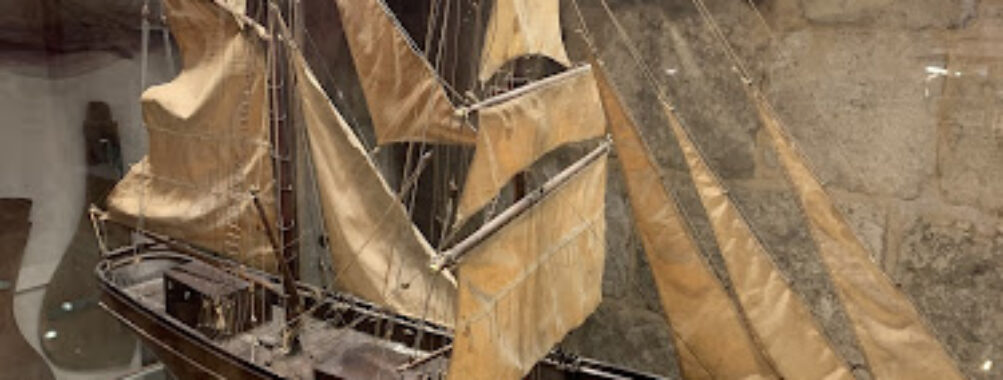
Sirmuma – Syracuse Museum of the Sea
Table of Contents
Description
The Sirmuma – Syracuse Museum of the Sea isn’t just another museum you wander into on a rainy day. It’s tucked inside the old Torre dell’Aquila warehouses along the Marina of Syracuse, and you feel the weight of history the moment you step in. The space itself carries scars of time, with echoes of its past layered into the stone walls. What makes this place stand out is how it connects Syracuse’s identity with the sea. The city has always lived and breathed by the water, and the museum doesn’t just show you artifacts—it tells you why the sea mattered, and still does, to the people here.
Walking through the exhibits, you’ll find yourself drawn into stories of sailors, fishermen, and everyday life shaped by the tides. There are objects that feel surprisingly intimate, like tools worn smooth by hands long gone, or documents that speak of trade, travel, and survival. It’s not flashy or overwhelming, but that’s the charm. You leave with a sense of continuity, like you’ve been let in on a secret thread tying ancient Syracuse to the modern city you see outside. Sure, not everything is perfect—some displays feel a bit dated, and the signage could be clearer in parts—but the authenticity makes up for it. And honestly, that’s part of why people walk away remembering it so fondly.
Key Features
- Exhibits housed in the historic Torre dell’Aquila warehouses along the Marina
- Artifacts, documents, and images that highlight Syracuse’s maritime history
- Focus on both tangible and intangible heritage, from tools and crafts to oral traditions
- Accessible facilities including wheelchair-friendly entrance, parking, and restrooms
- Family-friendly environment with exhibits that engage children as well as adults
- Restrooms available on-site (though no restaurant, so plan ahead for food)
Best Time to Visit
If you ask locals when to go, most will tell you spring or early autumn is the sweet spot. The weather is pleasant enough for long walks along Ortigia’s narrow streets, and you won’t be jostling with the peak summer crowds. Personally, I’ve found late afternoon visits especially magical. You can soak up the museum’s atmosphere, then step outside to catch the golden light spilling over the Marina. Summer can be fun too if you don’t mind the heat and the tourist buzz—though, fair warning, it gets busy. Winter, on the other hand, has its own quiet charm. The museum feels almost contemplative when it’s less crowded, like you’ve got the place to yourself.
How to Get There
The museum is located right in the heart of Ortigia, the historic island part of Syracuse. If you’re staying nearby, it’s an easy walk through the winding streets—half the fun is getting a little lost along the way. For those coming from further out, buses and taxis drop you close to the island’s main entry points, and from there it’s a short stroll. Driving in Ortigia isn’t always the best idea (the streets are narrow and parking is tricky), but if you do, there are parking areas just outside the island where you can leave your car and walk in. Honestly, walking is the way to go—it gives you the chance to stumble across hidden courtyards, little cafés, and the kind of details you’d miss otherwise.
Tips for Visiting
First off, give yourself more time than you think you’ll need. On paper, the museum doesn’t look huge, but once you start reading the stories and studying the artifacts, you’ll want to linger. If you’re traveling with kids, it’s a surprisingly good stop—they can connect with the hands-on feel of the maritime tools and the exhibits aren’t overwhelming. Accessibility is solid, so if you or someone in your group uses a wheelchair, you’ll be comfortable here.
One thing to note: there’s no café or restaurant inside, so eat beforehand or plan to grab a bite nearby. Ortigia is full of trattorias and gelato shops, so you won’t go hungry. Also, bring a bottle of water, especially in the summer. And if you’re into photography, this place is a gem. The contrast of old stone, nautical relics, and soft Mediterranean light makes for some striking shots.
Here’s a little personal tip: after your visit, take a slow walk along the Marina promenade. It’s one of those simple pleasures that ties your museum experience to the living city around you. You’ll see fishermen mending nets, kids playing, and couples strolling—it’s like the museum’s story spilling out into the present day. That’s when you really feel the heartbeat of Syracuse.
Location
Places to Stay Near Sirmuma - Syracuse Museum of the Sea
Find and Book a Tour
Explore More Travel Guides
No reviews found! Be the first to review!